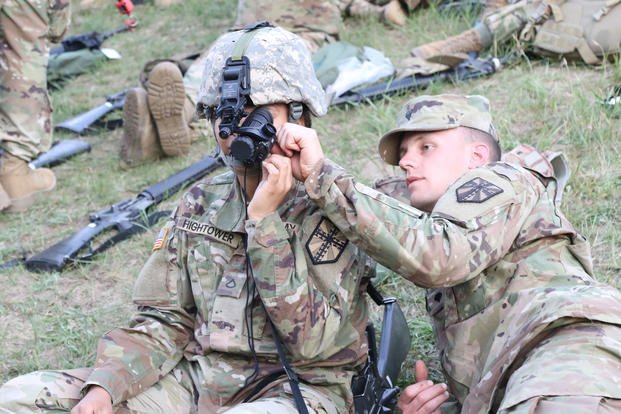The Pentagon wants a new style of sophisticated protective eyewear that features adjustable vision enhancement so Marines and soldiers can identify and sight in on targets more quickly than ever before.
The goal of Vision Enhancement for the Dismounted Soldier is to "enhance natural eyesight to aid in visual detection, identification, and acquisition of targets, friendlies, and other items of interest that would otherwise be obscured or difficult to see in military relevant environments with the unaided eye," according to a Sept. 24 solicitation posted on the government website for the Small Business Innovation Research (SBIR) program, which is designed to encourage small businesses to engage in federal research and development.
The research effort is looking to defense firms to present designs that "take into consideration the pupil location of the individual wearer, as needed, to optimize performance and compatibility with weapon technologies," the solicitation states.
"Hands-free activation (such as voice command) is also of interest, but not necessary for the purposes of this effort. In the event of power loss, imaging shall revert to an unaided mode for unobstructed vision," the document states. "Ultimately, the objective of the effort is to increase lethality and survivability through enhanced vision, and faster target detection and identification times, of persons and items of interest in military environments, without limiting capabilities naturally afforded by unaided vision."
Currently, soldiers and Marines rely on a combination of natural vision and optical aids such as scopes, binoculars, image intensifiers and thermal imagers to enhance combat vision.
"Donning and doffing of individual visual aids takes time and are impractical in situations when seconds count," according to the solicitation.
The effort, however, is not intended to duplicate or replace current weapons' optics and other sensors, it states.
The program is searching for concepts that:
- Reduce time needed to detect targets or friendly forces as compared to performance when relying on unaided vision.
- Ensure natural vision is not degraded in the event of power failure.
- Ensure performance is reasonably stable in different operating environments, such as temperatures, lighting conditions and humidity levels.
- Minimize distracting or confusing images that may decrease situational awareness, such as unwanted reflections, glare, ghost images, erratic flickering and image distortion.
Companies wishing to participate have until Oct. 24 to submit proposals, the solicitation states.
The document does not provide a timeline, contract awards or fielding goals except to say that phase one deliverables shall include monthly reports and conceptual drawings and designs.
Phase two deliverables include schematics and 12 working prototypes of spectacles or goggles.
"End item cost shall be considered early on," the solicitation states. "Target cost is $500 or less (with an ultimate goal of $200 or less once in production)."
The target weight of the entire system -- including batteries -- is less than 3 ounces if a "spectacle platform is chosen" and less than 6 ounces if a "goggle platform is chosen," the solicitation states.
"The ability to enhance vision and increase lethality shall be validated through testing," according to the solicitation.
-- Matthew Cox can be reached at matthew.cox@military.com.










